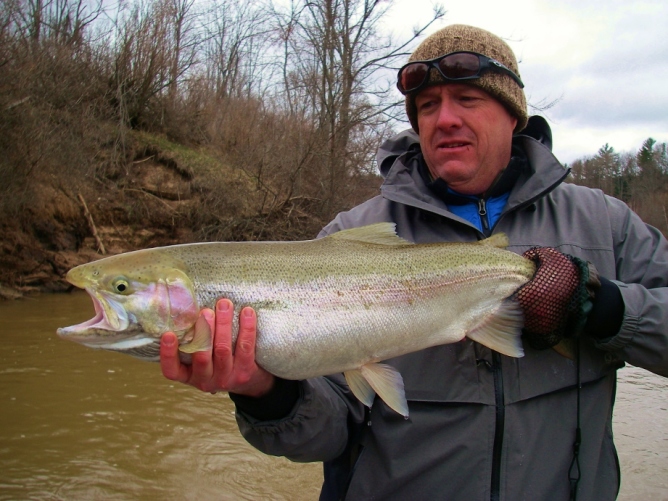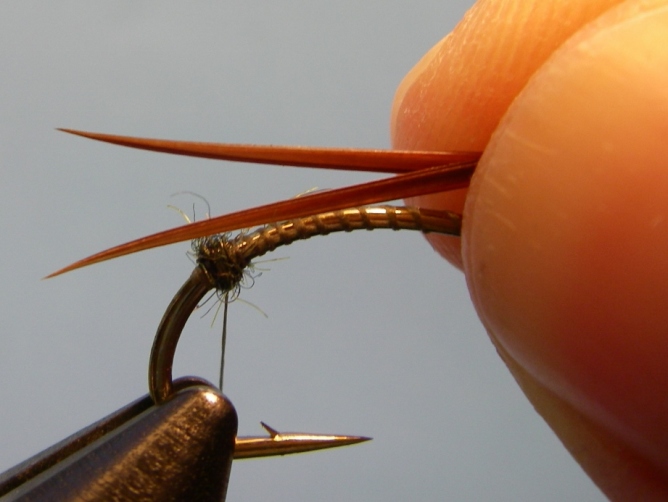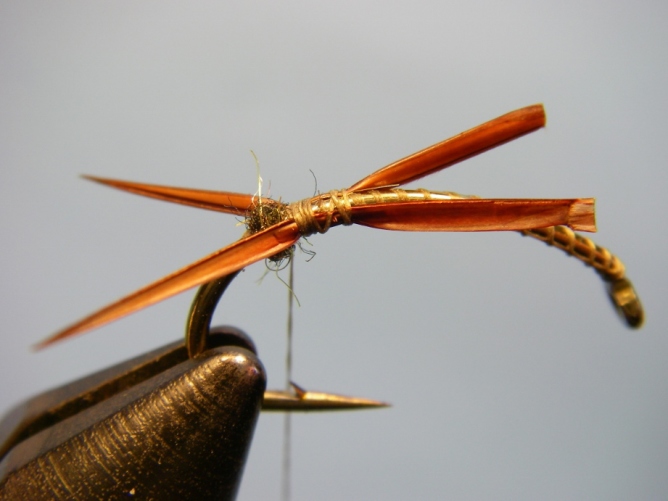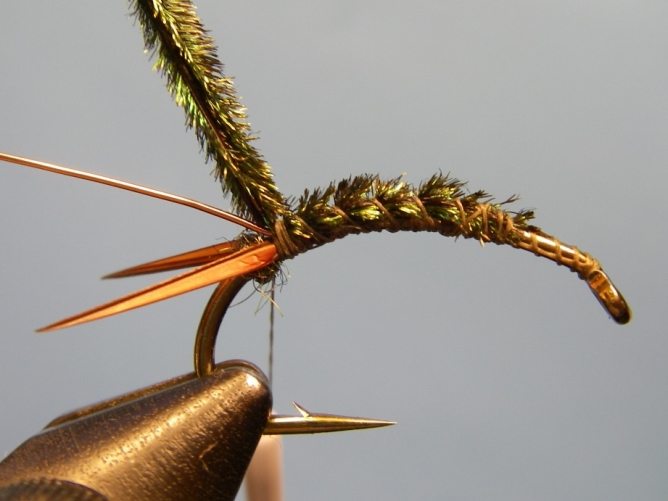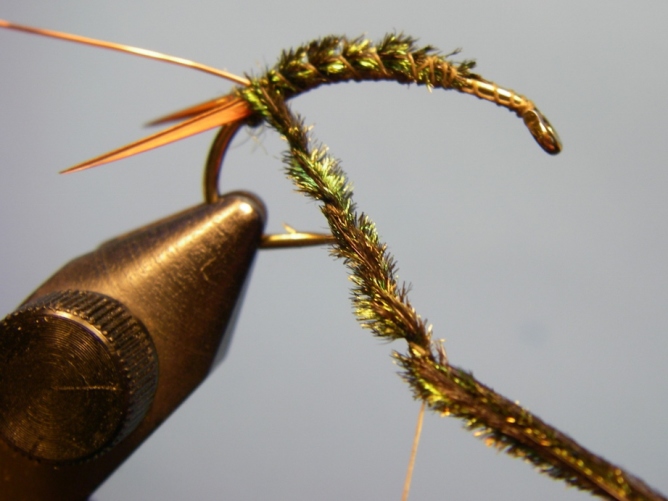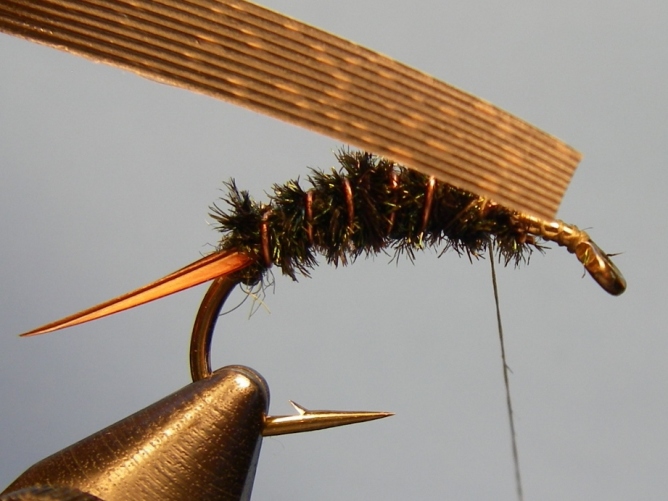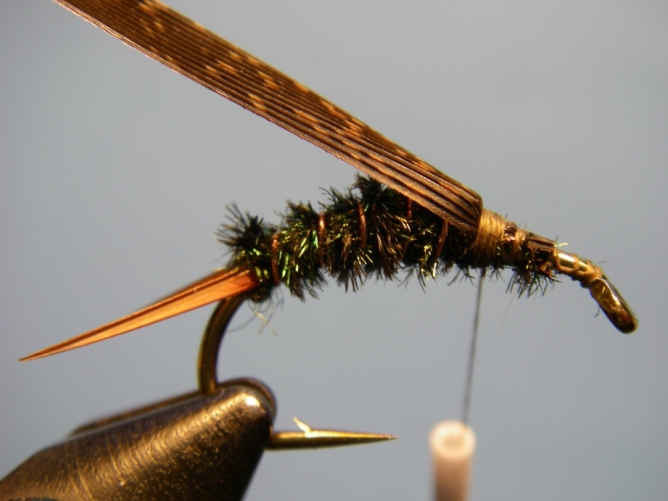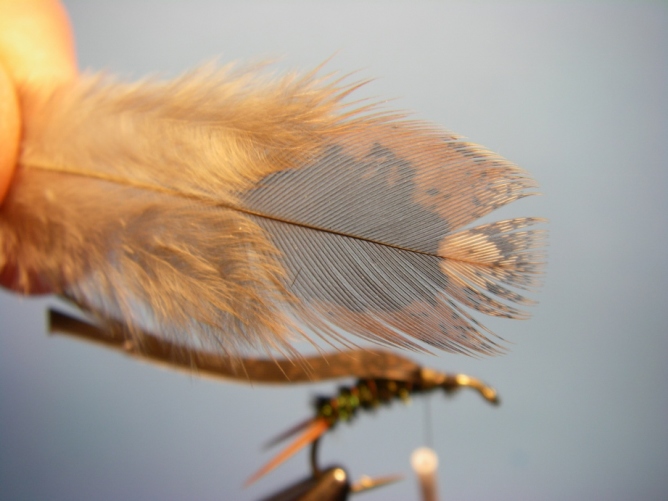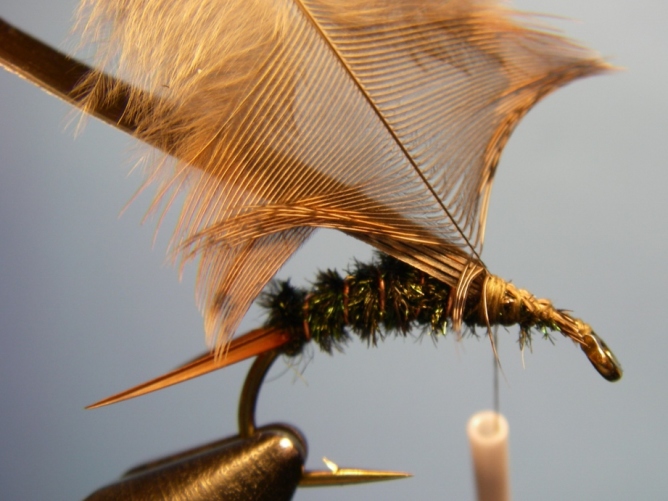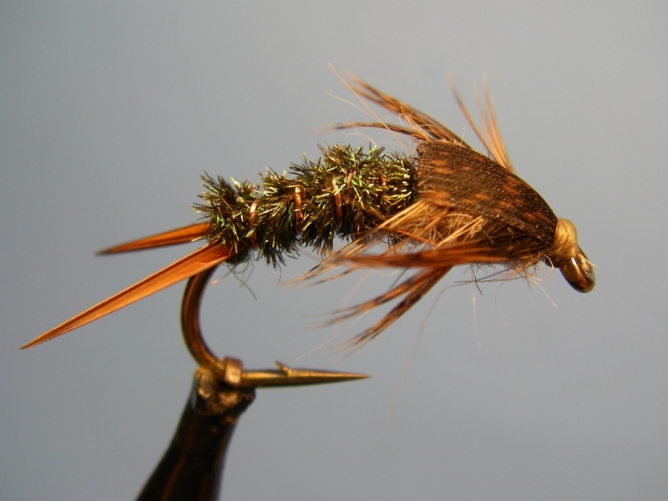
Twenty Pounder Stonefly Nymph
The Twenty Pounder is a variation of a somewhat common stonefly nymph pattern called the Twenty Incher. Since I like to use this fly for Steelhead and Salmon, I made some changes to the pattern to accommodate fish that are typically measured in pounds rather than inches, therefore the play on the name.
The scud hook is stronger than the original TMC 200R hook and also represents a curved stonefly getting washed downstream, providing a nice, natural profile. Copper ribbing is used rather than gold tinsel because, well, copper and peacock is a really nice combination that tends to work well on Michigan rivers and out west.
The iridescence of peacock is very natural and offers a bit of fish appeal. Borrowing elements from another pattern called the Half-Back, it just has a way of enticing fish to eat when the standard patterns aren’t working. Proportions are important, so pay close attention to where the different parts of the fly are tied. It’s pretty easy to tie and worth having in your box. And of course, if you are a trout angler, tie some up on lighter wire hooks and fish where stoneflies are present, including rivers out west.
I fish this pattern either in a dead-drift nymphing approach or with Duck-and-Chuck. Since stoneflies can be found in gravel/rocky areas as well as sandy areas (with wood) this fly is effective in various water types. If fishing in stained or dirty water, try tyingsome of these with a thorax material that offers some flash like Krystal Dub, Ice Dub or even Estaz.
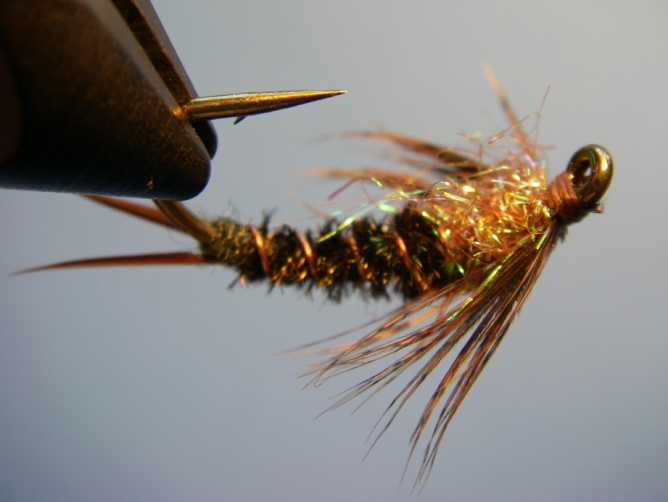 Recipe
Recipe
Hook: TMC 2457 #6 – #8
Thread: Uni 6/0 – Olive Dun
Tail: Brown Goose Biots
Tail Splitter: Arizona Synthetic Peacock Dubbing
Body: Peacock Herl
Thorax: Hare’s Ear Dubbing
Rib: Copper Wire, Medium
Wingcase: Treated Turkey Tail
Hackle: Grouse or Hungarian Partridge
Tying Instructions:
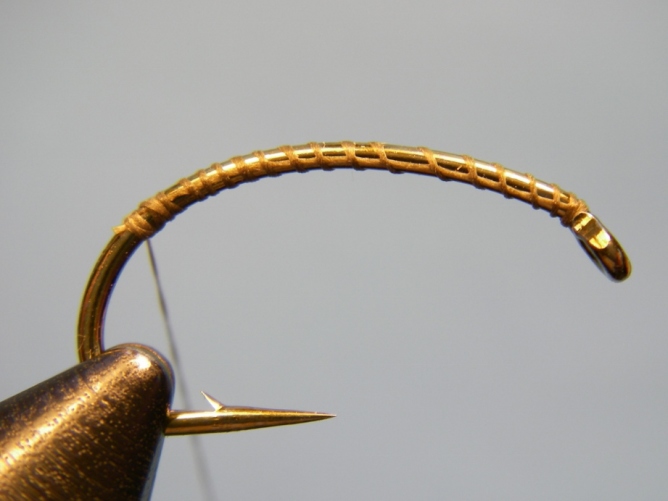 Step 1. Wrap a base layer from the eye backwards to just past above the hook barb.
Step 1. Wrap a base layer from the eye backwards to just past above the hook barb.
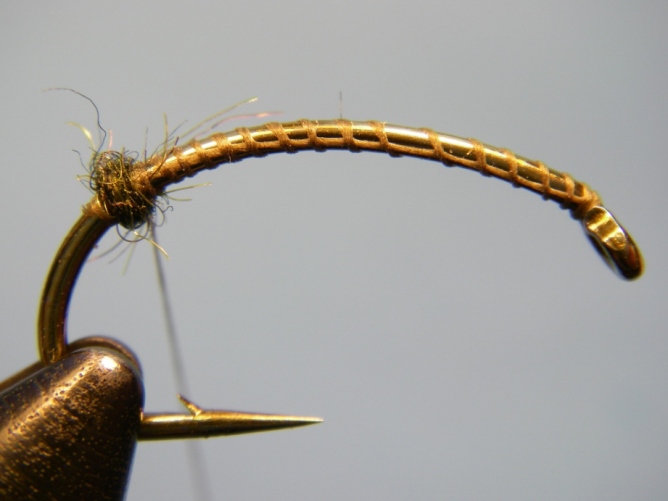 Step 2. Dub a very small ball of dubbing into the bend of the hook to help separate the biots/tail
Step 2. Dub a very small ball of dubbing into the bend of the hook to help separate the biots/tail
Step 3. Tie the biots in so they curve away from the hook and are even in length. I prefer to cut
two biots at once from the strip, trimming the base, and sliding them against the ball of dubbing to help split them. After tying down, trim the excess biot and advance the thread to the thorax section.
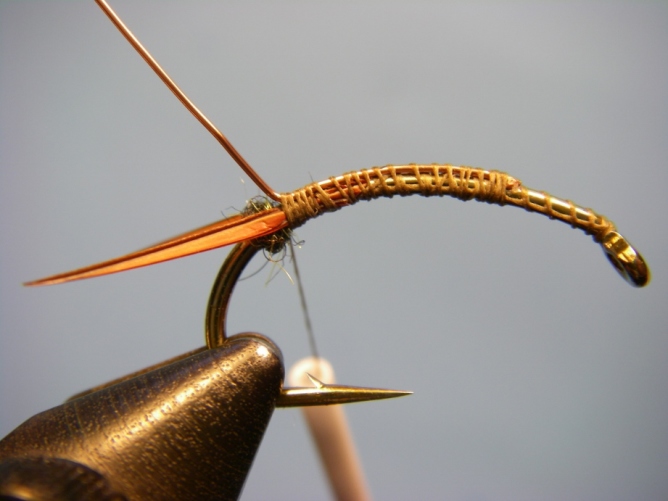 Step 4. Tie in copper ribbing on top of the hook so it extends from the thorax area backwards to the tails.
Step 4. Tie in copper ribbing on top of the hook so it extends from the thorax area backwards to the tails.
Step 5. Tie in 5 – 7 strands of peacock herl from the thorax area
backwards to the tails.Twist herl around the thread to strengthen.
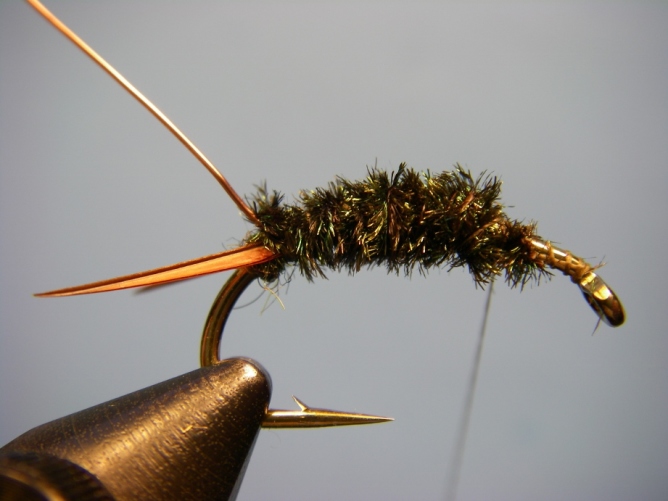 Step 6. Wind peacock herl forward making a slightly tapered body
Step 6. Wind peacock herl forward making a slightly tapered body
approximately 2/3rds of the way towards the hook eye. Trim excess.
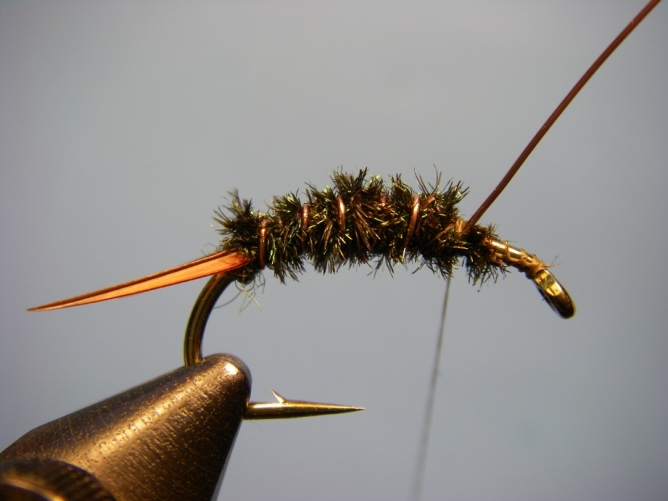 Step 7. Wind copper rib through peacock body and tie off.
Step 7. Wind copper rib through peacock body and tie off.
Step 8. Tie in the wingcase upside down (shiny side up) and facing backwards. I like to coat the backside of my cinnamon tip turkey tail feathers with a generous coat of Flex Seal to keep the fibers from separating when I pull it over to form the wingcase. Treat your feather(s) prior to tying as the adhesive needs time to cure. Some tyers prefer Krylon Crystal Clear spray.
Step 9. Tie in hackle, curved side up and by the tips of the feather and on top/over the wingcase.
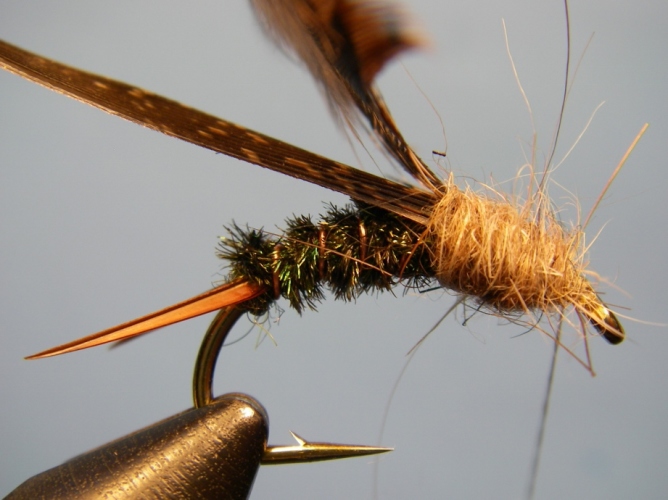 Step 10. Dub the thorax a little over the peacock and wingcase then forward
Step 10. Dub the thorax a little over the peacock and wingcase then forward
to just behind the hook eye keeping the diameter slightly larger than the body.
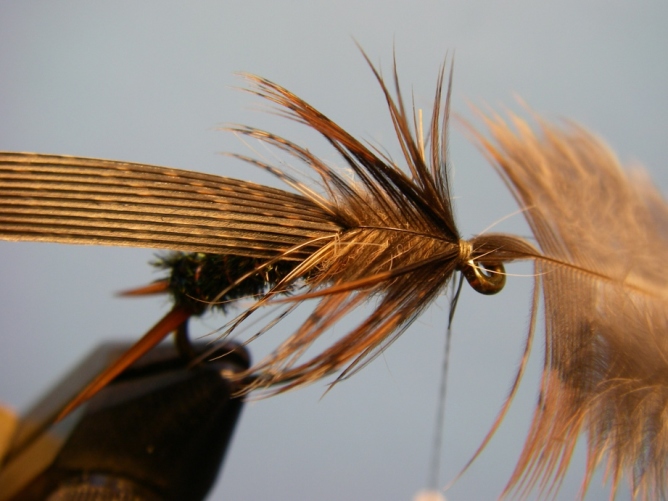 Step 11. Gently pull the hackle feather over the thorax and tie
Step 11. Gently pull the hackle feather over the thorax and tie
down forming the legs, evenly splayed on each side of the fly.
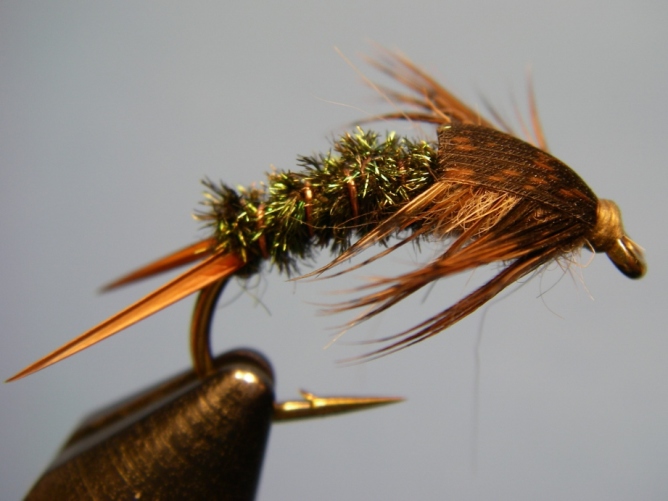 Step 12. Pull the wingcase over the thorax by creasing the feather
Step 12. Pull the wingcase over the thorax by creasing the feather
with your thumbnail and over legs/feather. Trim and whip finish.

